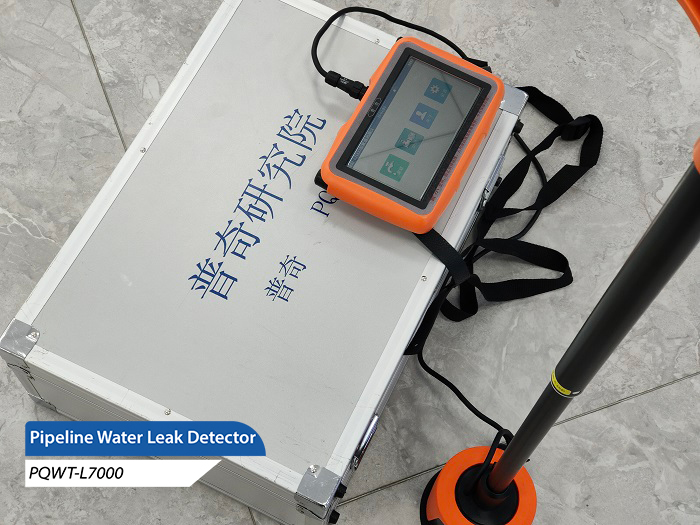Leakage of concealed water pipes not only causes waste of water resources, but also may lead to structural damage of buildings, ground collapse and other problems. In order to accurately find the leaks and repair them in time, using a professional pqwt water detector is an efficient way.

The pqwt water detector is mainly based on the principle of sound vibration to determine the location of the leakage point. When a leak occurs in a pressurized water pipe, the leaking water flows at a certain speed over the broken area of the pipe and rubs against the pipe wall, a process that generates specific sound vibrations. These vibrations travel along the pipe and penetrate the soil to reach the ground. By capturing these vibration signals with specialized detection equipment, technicians can trace the exact location of the leak.
Basic Detection Steps
1. Preparation: Connect the pqwt water detector main unit, headphones and sensors.
2. Equipment startup: Turn on the instrument switch and wear the headset.
3. Site layout: the sensor is placed on the ground above the suspected water leakage pipe, usually in accordance with a certain step interval gradually placed.
4. Signal detection: the operator walks while listening, through the earphone sound changes to determine the signal strength.
5. Data analysis: Compare the signal strength of different locations and determine the strongest signal location that is closest to the leak.
Cautions
Single-point audiometry results are for reference only, and need to be repeatedly compared in multiple locations to draw accurate conclusions.
-Need to consider the direction of the pipeline and layout characteristics, such as pipe tees, bends and other locations may affect the sound propagation path.
-Factors such as ground material and pipe burial depth may also affect the propagation of sound signals, so comprehensive consideration is required.
Conclusion
The pqwt water detector can effectively locate leaks by capturing and analyzing the acoustic vibrations produced by water leaks. However, the proper use of these devices also requires a certain level of experience and expertise on the part of the technician in order to eliminate interfering factors and ensure the accuracy of the detection results. As technology advances, it is likely that more advanced tools and techniques will be applied to this area in the future, further improving detection efficiency and accuracy.








